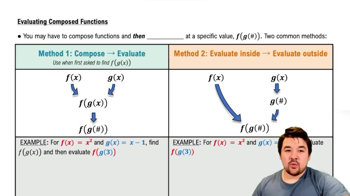{Use of Tech} Write the formula for Newton’s method and use the given initial approximation to compute the approximations x₁ and x₂.
f(x) = x² - 6; x₀ = 3
 Verified step by step guidance
Verified step by step guidance Verified video answer for a similar problem:
Verified video answer for a similar problem:



 5:53m
5:53mMaster Finding Differentials with a bite sized video explanation from Patrick
Start learning